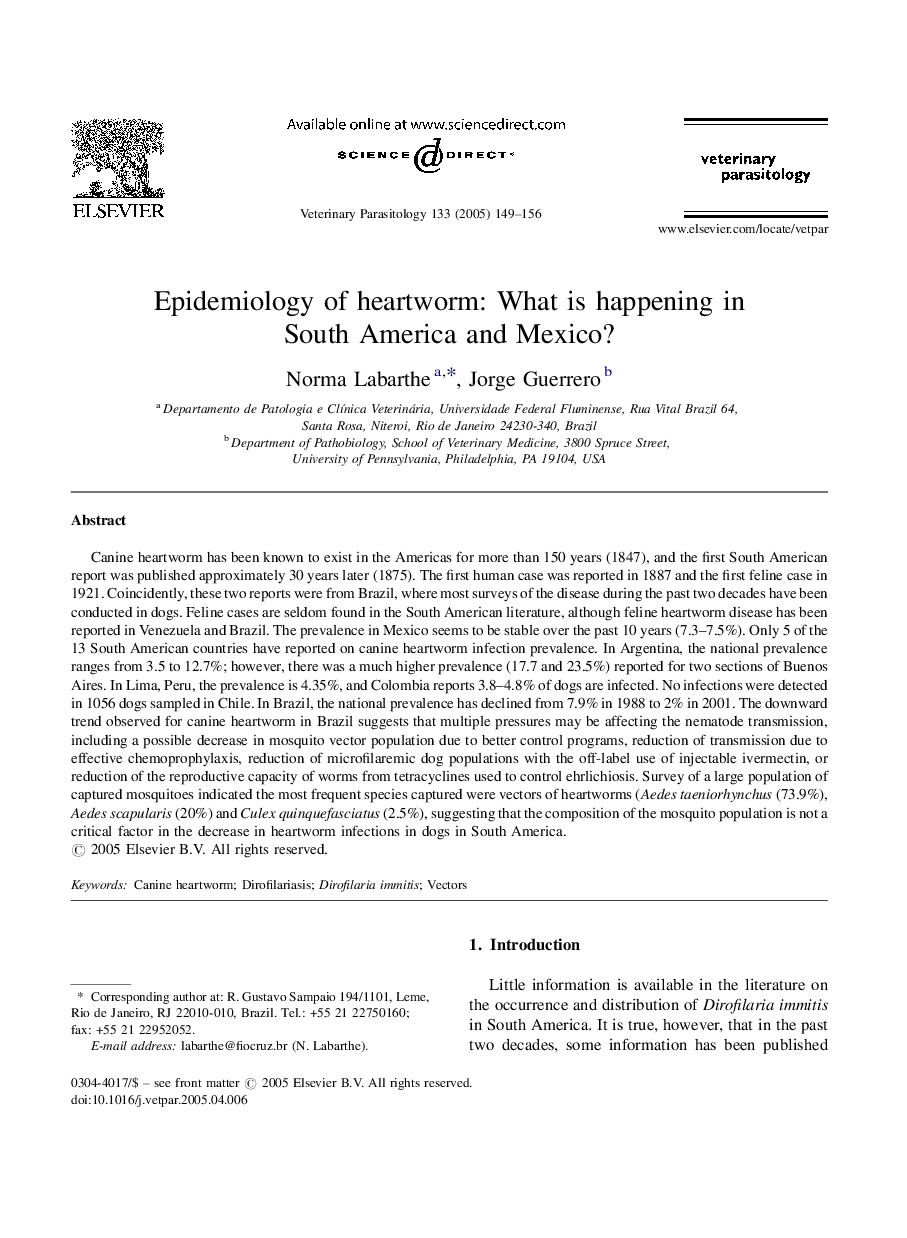| کد مقاله | کد نشریه | سال انتشار | مقاله انگلیسی | نسخه تمام متن |
|---|---|---|---|---|
| 8991092 | 1555803 | 2005 | 8 صفحه PDF | دانلود رایگان |
عنوان انگلیسی مقاله ISI
Epidemiology of heartworm: What is happening in South America and Mexico?
دانلود مقاله + سفارش ترجمه
دانلود مقاله ISI انگلیسی
رایگان برای ایرانیان
کلمات کلیدی
موضوعات مرتبط
علوم زیستی و بیوفناوری
علوم کشاورزی و بیولوژیک
علوم دامی و جانورشناسی
پیش نمایش صفحه اول مقاله

چکیده انگلیسی
Canine heartworm has been known to exist in the Americas for more than 150 years (1847), and the first South American report was published approximately 30 years later (1875). The first human case was reported in 1887 and the first feline case in 1921. Coincidently, these two reports were from Brazil, where most surveys of the disease during the past two decades have been conducted in dogs. Feline cases are seldom found in the South American literature, although feline heartworm disease has been reported in Venezuela and Brazil. The prevalence in Mexico seems to be stable over the past 10 years (7.3-7.5%). Only 5 of the 13 South American countries have reported on canine heartworm infection prevalence. In Argentina, the national prevalence ranges from 3.5 to 12.7%; however, there was a much higher prevalence (17.7 and 23.5%) reported for two sections of Buenos Aires. In Lima, Peru, the prevalence is 4.35%, and Colombia reports 3.8-4.8% of dogs are infected. No infections were detected in 1056 dogs sampled in Chile. In Brazil, the national prevalence has declined from 7.9% in 1988 to 2% in 2001. The downward trend observed for canine heartworm in Brazil suggests that multiple pressures may be affecting the nematode transmission, including a possible decrease in mosquito vector population due to better control programs, reduction of transmission due to effective chemoprophylaxis, reduction of microfilaremic dog populations with the off-label use of injectable ivermectin, or reduction of the reproductive capacity of worms from tetracyclines used to control ehrlichiosis. Survey of a large population of captured mosquitoes indicated the most frequent species captured were vectors of heartworms (Aedes taeniorhynchus (73.9%), Aedes scapularis (20%) and Culex quinquefasciatus (2.5%), suggesting that the composition of the mosquito population is not a critical factor in the decrease in heartworm infections in dogs in South America.
ناشر
Database: Elsevier - ScienceDirect (ساینس دایرکت)
Journal: Veterinary Parasitology - Volume 133, Issues 2â3, 24 October 2005, Pages 149-156
Journal: Veterinary Parasitology - Volume 133, Issues 2â3, 24 October 2005, Pages 149-156
نویسندگان
Norma Labarthe, Jorge Guerrero,